What is Sequential Messaging?
Sequential messaging happens to be basically a pattern of marketing wherein messages, depending on the action of their engagement or the customer journey, are tailored to the audience and delivered to its efforts on a timeline. Instead of bombarding them with random or isolated messages, this technique tells them a story through time, nurturing leads and coaxing them toward conversion. Sequential messaging thus unites continuity, context, and relevance in every message so that marketers can therefore group them with the emitting potential customer state of mind. Through the application of well thought out timing and personalized content, people from sequential messaging build tighter bonds with brands, lift engagement, and provoke meaningful action. In an ever-loud cyber universe, this strategy can break through by laying front value in a customer-driven, orderly, and relevant manner that ultimately heightens retention and success for any campaign.
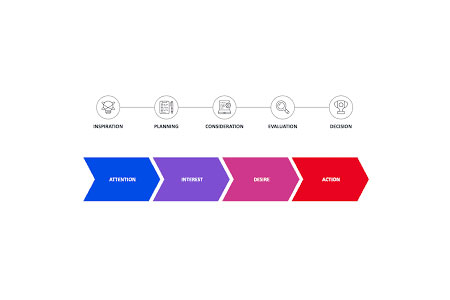
Types of Sequential Targeting
Percentage-based Engagement Tracking
Percentage-based engagement measurement enables marketers to send reminders based on the percentage of a video, webpage, or email viewed by the user. Instead of relying on bland opens or clicks, the method gives more detail about user interest. It improves the targeting strategy by delivering the right message at the right time, when engagement is high, offering more contextually relevant interactions and the highest likelihood of conversion along the chain.
Website Visitor Retargeting
Website visitor retargeting is a core element of sequencing messaging wherein brands can re-target users based on browsing activity. Whether the user is visiting a product page or leaving a shopping cart, follow-up messages may be initiated by what they are actually doing. This provides a seamless experience to the user, reminding him about the brand and providing a higher chance of conversion without over-fatiguing the audience by sending them irrelevant or useless messages.
Click-Based Retargeting
Click-based retargeting targets individuals who clicked on certain links or CTAs within earlier campaigns. These interactions reflect actual interest and therefore are a great trigger for sequential messaging. By issuing context-sensitive follow-ups, marketers can guide prospects on a tailored journey. Not only does this build engagement but also it weans out passive observers, directing energies on those most likely to convert or execute the target next action.
Importance of Sequential Messaging
Enhancing Customer Engagement Over Time
Sequential messaging is a way of interacting over time with the customer, aligning content with a specific change in interest and behavior. From the onset, it delivers value in pieces, in a short bite, instead of overwhelming consumers with anything and thereby keeping them engaged and well informed. This constant engagement builds trust and comfort in the prospect, thus ensuring a meaningful conversation from their end. Lastly, it is the evolution of a conversation where the customers are more engaged and open for further touchpoints rather than a mere broadcast.
Building Trust Through Consistent Communication
Trust isn't built within a message, it's gained by repeated, relevant messaging consistently over time. Sequential messaging allows brands to release high-value content in sequential order, reflecting an understanding of the needs at each stage. Consistency builds feelings of dependability, presenting the brand as considerate and reliable. With each timely interaction, it strengthens credibility, getting customers increasingly at ease with their choices and more loyal to the brand.
Reducing Message Overload and Avoiding Spam
One of the largest traps in online marketing is bombarding the audience. Sequential messaging avoids this by sending only pertinent, timed messages, minimizing the likelihood of spammish overkill. Messages are paced and articulated dependent on user behavior, ensuring there's no redundancy and each touchpoint contributes value. Such considered pacing sustains interest without exhaustion, being respectful of the recipient's time and building a more favorable brand impression over time.
Aligning Messaging with Customer Journey Stages
Successful communication occurs when it addresses the customer where they are. Sequential messaging coordinates each message with particular phases of the customer lifecycle, from awareness to decision, so that it is relevant at all times. Whether it is educating a new lead or cultivating a warm prospect, the messaging adjusts accordingly. This coordination not only enhances engagement but also the overall experience, leading users through an uninterrupted journey to conversion with content engaging at every step.
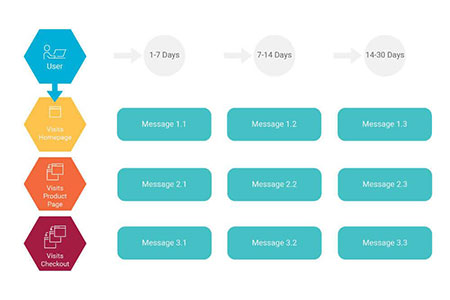
Benefits of Sequential Messaging
Increased Conversion Rates
By sending the proper message at the proper time, sequential messaging dramatically increases conversion rates. Instead of overwhelming users with blanket content, it encourages them with custom communication that adapts to behavior. This calculated progression eliminates doubt, confirms value, and ultimately drives action. Every message in the sequence functions as an essential step toward the final objective because leads receive guidance through hearing.
Improved Customer Retention and Loyalty
The method of sequential messaging serves dual purposes since it helps businesses gain new customers while maintaining their existing customer base. Brands that provide consistent value after initial conversion become both top-of-mind and front-of-mind for their audience. Continuous contact between customers and brands creates stronger relationship depth which reestablishes trust and motivates customers to engage again. After repeated contact, customers link the brand with dependable and timely service so loyalty grows beyond the first interaction.
Personalization at Scale
The essential factor for modern marketing success is personalization but achieving it at scale presents significant difficulties. The combination of automation with behavioral triggers enables sequential messaging to send individualized content to large audience groups. Every user receives messages that are tailor-made because real behavior and interest trigger these messages. The combination of automated processes with relevant content enables brands to expand their personalized approach while maintaining individualized experiences, which leads to improved engagement and stronger customer bonds.
Efficient Use of Marketing Resources
The sequential messaging strategy directs marketing resources toward areas that produce the highest value. The method focuses on sending content specifically at times and locations where it will generate the greatest impact instead of using broad and random campaigns. Automation eliminates human burden, and behavioral data guarantees every message has a function. This intelligent deployment of time and budget not only maximizes efficiency but also boosts ROI, making sequential campaigns an economically savvy option for performance-based marketing tactics.
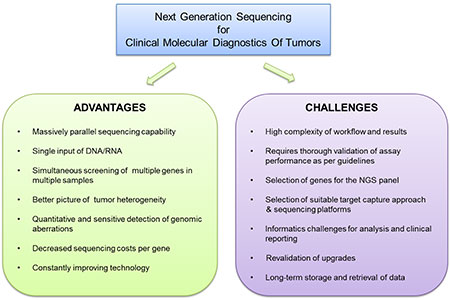
The Impact of Sequential Messaging
Case Studies Demonstrating Success
Real-world applications of sequential messaging confirm its measurable impact. Businesses in all sectors have used it to spur conversions, increase retention, and streamline user engagement. Whether it's an e-commerce business recapturing abandoned carts or a SaaS business streamlining onboarding, the proof is in the pudding. These case studies demonstrate how sequential messaging achieves short-term success and long-term growth when executed properly, and it's a strategy any marketer will do well to include in his or her arsenal.
Measurable Improvements in Open and Click Rates
Tactical sequential messaging always performs better than ad hoc campaigns on open and click-through rates. Since messages are sent after considering past interactions, recipients are more likely to tap into content that seems timely and relevant to their interests. This translates into better engagement metrics over time, allowing marketers to see what works and improve subsequent messaging. These gains aren't superficially cosmetic but actually map to increased lead nurturing and increased conversion.
Boost in Revenue and ROI
Sequential messaging has a direct effect on bottom-line performance by elevating customer interaction and driving conversions. In building a step-by-step user journey that fosters users, it reduces sales cycles and maximizes revenue potential. Through automation and focused delivery, it also minimizes wasteful spending, resulting in more efficient campaigns. All this translating into enhanced sales and diminished waste results in better ROI, offering marketers a more intelligent means of attaining their business objectives without compromising quality.
Strengthening Brand Awareness
Uniform and timely messaging keeps brands top-of-mind by keeping your company in the minds of customers along their path. Sequential messaging accomplishes this in a nonintrusive way, each touchpoint is normal and provides value. Frequency over time makes it familiar and trusted. It turns brand visibility from sporadic to consistent, not just familiarizing your name with customers but associating it with relevance, reliability, and value-added interactions.
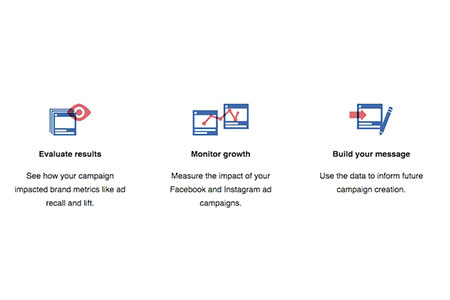
Effectiveness of Sequential Messaging
Timing and Frequency Optimization
Sequential messaging is one of the strongest points of optimizing both frequency and timing. Marketers do not have to guess when to deliver the next message but instead utilize behavior signals to trigger at the perfect time. This information-based methodology makes the content timely, yet not intrusive. It avoids engaging the audience too much while sustaining meaningful engagement, leading to greater responsiveness and campaign performance over time.
Content Relevance and Adaptability
Sequential messaging survives on messaging that's both contextual and flexible. As behaviors change among users, so does the messaging stream, enabling marketers to remain attuned to changing interests. This keeps every message in line with the customer lifecycle, instead of clashing uncomfortably. Focusing on context and personalization, this approach is continually high-engagement and positions your company in front of customers as responsive, engaged, and deeply customer-centric amidst a sea of digital static.
Integration with Multi-Channel Campaigns
Woven together across various channels, sequential messaging is that much more powerful. Through email, SMS, social ads, or push notifications, the messaging flow is smooth and strategically cohesive. This integrated method across platforms enhances user experience, solidifies brand presence, and optimizes the possibility for conversion. By engaging customers where they are, at the channels where they prefer to be—marketers waste not an opportunity and each touch contributes value to the experience.
Tracking and Analyzing User Behavior
The potential of sequential messaging is based on user activity. Marketers can map where customers are on their journey if they track them by clicks, page views, time spent, and engagement. They are then able to respond appropriately with messaging. A real-time feedback loop brings wiser choices and better results. By tracking this, campaigns become more responsive and change their approach based on the customer over time, creating content that feels relevant, timely, and actually useful.

How to Create an effective Sequential Messaging Strategy
Defining Clear Goals and Objectives
Well-expressed, measurable objectives are the cornerstones of a successful sequential messaging strategy. Whether your objective is to generate a conversion, reduce churn, or grow engagement, knowing the objective establishes the A-to-B message path. It will establish content types, timing, and even what initiates the sequence. Having a specific objective prevents sequence entropy or uselessness. Objectives must be established in advance so that each individual message contributes to a total goal, a process, not a series.
Segmenting Your Audience for Targeted Messaging
The best sequential messaging is founded on smart segmentation of the audience. By segmenting your audience along behavior, demographics, or interest, you are able to message in ways that address each of those audience segments' unique needs. It is most relevant, raises engagement, and erases wasted efforts. Segmentation allows for personalization at scale, and each message is uniquely speaking to its recipient and pulling it toward conversion naturally and in the moment.
Crafting Compelling and Relevant Content
Content is the heart of any sequential messaging strategy. All messages should have meaning, advancing the recipient step-by-step toward a goal while offering true value. From successful subject lines to solid calls to action, all should be relevant. Content must be user behavior and stage-aware, remaining fresh and engaging. When your message feels personal, timely, and impactful, it generates more powerful connections and drives action.
Setting Up Automation and Testing Sequences
Automation turns sequential messaging into a notion that becomes a scalable approach. Using the proper software, you can automate user behavior-based messaging to get the best timing without the need for human intervention. But setup is just half the solution, testing routinely is needed. A/B testing subject lines, formats, and timing optimizes performance. This iterative process keeps your sequences optimal, efficient, and in sync with your audience's shifting expectations and behaviors.
Monitoring Performance and Making Adjustments
No sequential messaging strategy is ever complete without continuous tracking. Tracking opens, clicks, and conversions gives you a very clear picture about what is a statement and what is not. Data-driven decision making helps you make last-minute adjustments that have the main potency to affect the sequence. It's not about entertaining your audience but about changing with them. By constant checks on performance, marketers can maximize impact, minimize waste, and get every message to do its job on the journey.
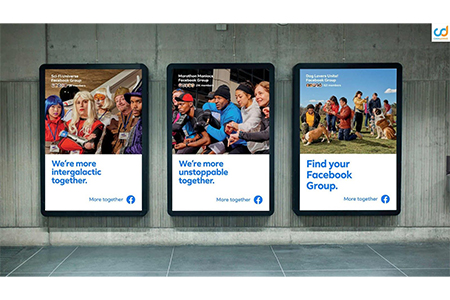
Examples of Sequential Messaging
Sequential messaging is utilized broadly throughout industries to develop coherent communication streams. For instance, in online shopping, an abandoned cart user may initially be sent a soft reminder, then a discount promotion, and subsequently a last push with social confirmation. In SaaS, onboarding series tend to involve a welcome message, supplemented by product tutorials, and eventually case studies. Schools utilize it to guide leads from the point of inquiry all the way to enrollment. B2B businesses usually send a string of value-based emails to warm up leads prior to a sales call. Every sequence is crafted to advance the recipient from interest to action by employing context and timed messages. These cases point to the power and flexibility of sequential messaging when combined with user behavior and business objectives.

Frequently Asked Questions (FAQs)
By sending precisely timed relevant information, it stimulates user actions toward customer path completion, which boosts conversion rates and marketing results.
The system creates a user-specific dialogue that responds to user actions, thus transforming the experience into a personal engagement that eliminates generic marketing noise.
The best practice platforms for marketing automation include HubSpot and Mailchimp and ActiveCampaign and Klaviyo and Salesforce Marketing Cloud, which provide automation capabilities together with targeting features and tracking functions across different customer interaction points.
A successful approach begins with defined objectives followed by audience segmentation and content development then process automation and continuous performance monitoring for message optimization.
Organizations commonly apply this method to new customer onboarding and cart abandonment recovery as well as lead nurturing and drip campaigns and re-engagement campaigns to drive purposeful messaging toward action.



